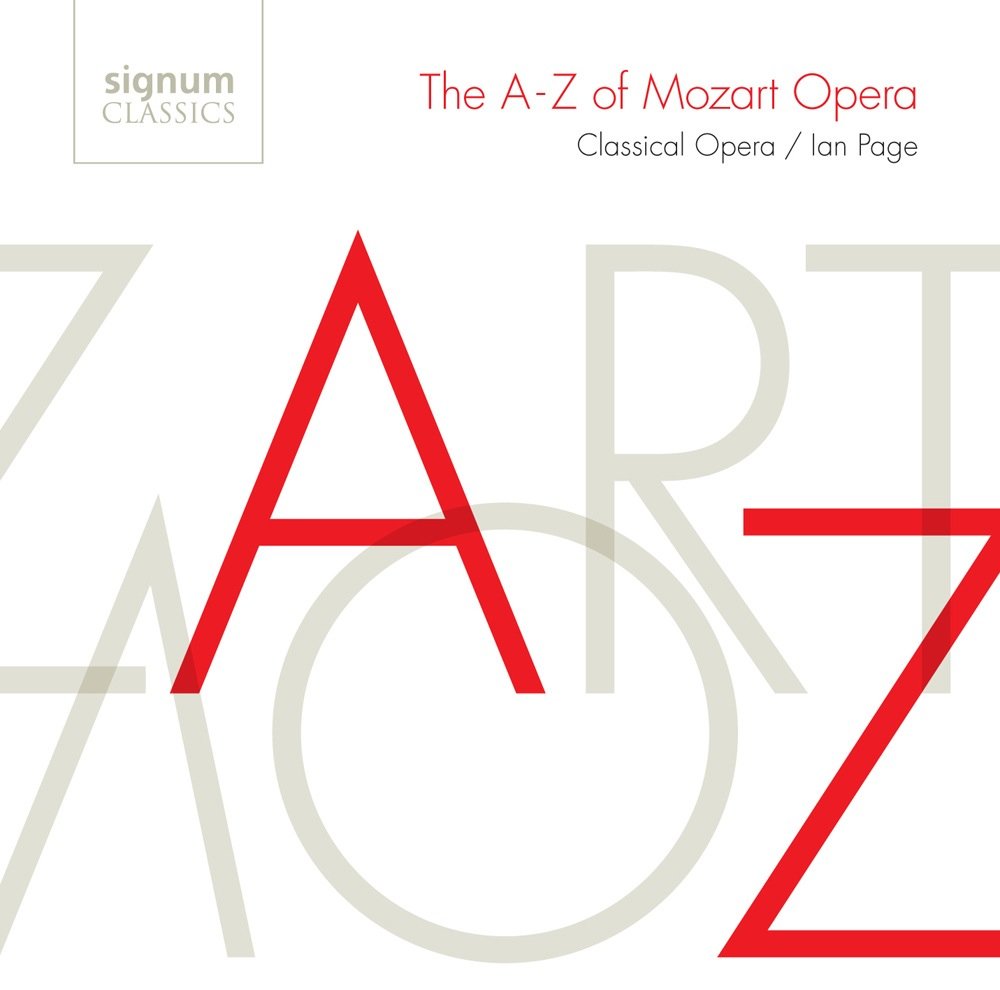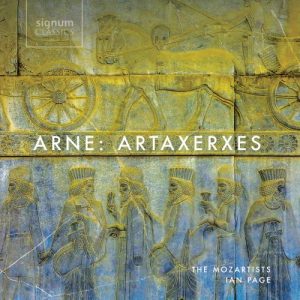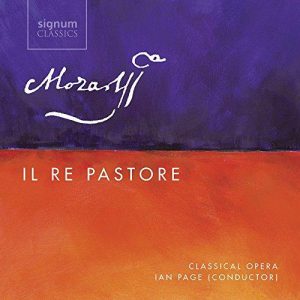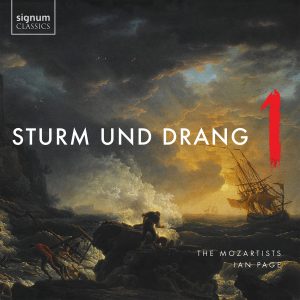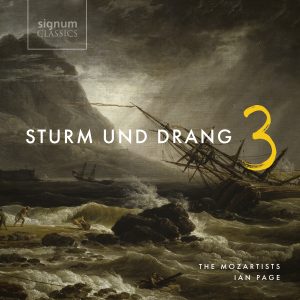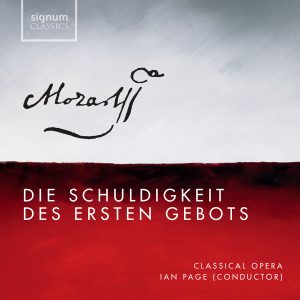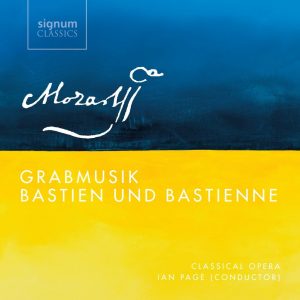The A-Z of Mozart Opera
£12.00
Re-released on Signum Classics in March 2014, Classical Opera’s début recording, The A-Z of Mozart Opera, was selected for Gramophone magazine’s annual Critic’s Choice in 2007. Founded on the coincidence that Mozart’s first opera (Apollo et Hyacinthus) begins with A and his last (Die Zauberflöte) with Z, this disc takes the listener on a chronological journey through Mozart’s operatic canon, featuring an aria or ensemble from fifteen of his operas.
The outstanding cast features acclaimed British artists Susan Gritton, Mark Stone and Matthew Rose, Swedish soprano Klara Ek, Dutch mezzo soprano Cora Burggraaf and five of Classical Opera’s former Associate Artists – sopranos Rebecca Bottone, Martene Grimson and Anna Leese and tenors Allan Clayton and Andrew Staples. The recording was devised and conducted by Ian Page.
“This is one of the most impressive pieces of programming I have experienced in a long time. Not only do Ian Page and his Classical Opera Company take us chronologically from Mozart’s first opera (Apollo et Hyacinthus, which starts with an “A”) to his last (Die Zauberflöte, which has a prominent “Z”), with samples from almost every opera composed in between, but they also show us an astonishing range of dramatic situations, convey an idea of how Mozart’s musical language changes between 1767 and 1791, and cleverly mix well known favourites with relative obscurities, unpredictable choices from famous operas, and some dramatic set-piece ensembles seldom heard out of context.
These young singers and a period-instrument orchestra – packed with many of the wisest practitioners in the business – deliver uniformly superb interpretations. The band is by turns boldly brilliant or sweetly evocative according to the dramatic context, and the big cast (five sopranos share the spoils) is excellent. “The Classical Opera Company deserves enormous credit for an auspicious debut recording of intelligence, finesse and quality. It would be cause for celebration if this could be followed up with a complete opera recording.”
DAVID VICKERS, GRAMOPHONE
“What a winning idea: an exact chronological run through every Mozart opera, from A (Apollo et Hyacinthus) to Z (Die Zauberflöte). A fine showcase, too, for Ian Page’s Classical Opera Company. The singing team mixes familiar names and young sparks. Not everyone can shimmer like Susan Gritton or sing in 3-D like Matthew Rose, but you warm to the fresh ebullience. And the orchestra knows just how to sparkle and charm.”
GEOFF BROWN, THE TIMES
“This exquisite collection of arias and ensembles from Apollo et Hyacinthus to Zaide is sung by some of the most exciting young voices to emerge in recent years and played on period instruments. Ian Page, the conductor of The Classical Opera Company, is an instinctive accompanist whose awareness of the text is craftily underlined in his phrasing. The ravishing finale from Il re pastore is a highlight. Rebecca Bottone and Martene Grimson’s duet from Mitridate another, while Mark Stone’s world-weary Don Giovanni adds a pinch of danger.”
ANNA PICARD, INDEPENDENT ON SUNDAY
“The A-Z of Mozart Opera involves eleven superb performers including soprano Susan Gritton, baritone Mark Stone and the outstanding young tenor Allan Clayton. They perform fifteen numbers from Mozart’s operas in order of composition. It’s a fascinating device which allows the listener to chart the composer’s emotional development over his career, and is performed with captivating style and flair.”
WARWICK THOMPSON, METRO
“A fascinating idea, superbly and revealingly carried out.”
ROB AINSLEY, HMV CHOICE
“My personal pick for giving this year is the Classical Opera Company’s glorious The A-Z of Mozart Opera, which is fresh, diverse, insightful and illuminating (everything that such recital anthologies usually fail to be).”
DAVID VICKERS, GRAMOPHONE
“I’m delighted that Signum has re-released this 2007 Sony Recording, which I missed then. A-Z – Apollo et Hyacinthus to Die Zauberflöte – covers the whole range in 15 well-sung and played numbers. Page and his young musicians have a real feeling for Mozart, and the excerpts, beginning with the 11-year old composer’s astonishing duet ‘Natus Cadit’ (‘My Son is Dead’), are artfully chosen to make the best case for early Mozart. Even so, the emotional intensity of the Idomeneo quartet is a bombshell.”
DAVID CAIRNS, SUNDAY TIMES
“Page, to my mind one of the most talented of today’s younger British conductors, immediately announced himself with this CD as a natural Mozartian. Indeed, one of the chief pleasures is the juxtaposition of graciously phrased cantabiles—listen, for example to the line he achieves in the delectable ‘Ruhe sanft’ (Zaide)—and the dramatically incisive rhythms of an aria like ‘Se vuol ballare’ (Figaro), all splendidly played.”
BRIAN ROBINS, EARLY MUSIC REVIEW
CD 1
- Duetto: “Natus cadit, atque Deus” from Apollo et Hyacinthus5:37
- Aria: “Amoretti, che ascosi qui siete” from La finta semplice4:50
- Aria: “Diggi, daggi, schurry, murry” from Bastien und Bastienne1:29
- Duetto: “Se viver non degg’io” (original version) from Mitridate, re di Ponto7:47
- Aria: “Fra i pensier più funesti” from Lucio Silla3:13
- Cavatina: “Geme la tortorella” from La finta giardiniera4:42
- Finale: “Viva l’invitto duce” from Il re pastore6:26
- Aria: “Ruhe sanft, mein holdes Leben” from Zaide5:59
- Quartetto: “Parti, te lo commando… Andrò ramingo e solo” from Idomeneo6:00
- Aria: “Konstanze… O wie ängstlich, o wie feurig” from Die Entführung aus dem Serail4:37
- Cavatina: “Bravo signor padrone… Se vuol ballare, signor Contino” from Le nozze di Figaro3:12
- Canzonetta: “Deh vieni alla finestra” from Don Giovanni2:06
- Quintetto: “Di scrivermi ogni giorno” from Così fan tutte2:32
- Duetto: “Ah, perdona al primo affetto” from La clemenza di Tito2:52
- Quintetto: “Hm! hm! hm! hm!” from Die Zauberflöte6:17
Apollo to Zauberflöte: The A-Z of Mozart Opera
This recording takes its inspiration from the coincidence that Mozart’s first opera begins with ‘A’ and his last with ‘Z’. Considering the almost universal appeal and popularity of his music, it seems extraordinary that less than half of Mozart’s operas command a regular place in the repertoire of the world’s opera houses, and this chronological journey offers the opportunity not only to see how his genius developed between Apollo et Hyacinthus and Die Zauberflöte, but also to appreciate the immense range and versatility of his writing. Of course no one can pretend that the early operas are as accomplished as the masterpieces of his maturity, any more than one would argue that the plays of Shakespeare are all uniformly great, but like Shakespeare, Mozart had a staggeringly profound and compassionate understanding of human nature which, to a greater or lesser degree, shines through in every one of his stage-works.
This is even true of the first three operas – Apollo et Hyacinthus (1767), La finta semplice (1768) and Bastien und Bastienne (1768) – all written before Mozart became a teenager – and the first two in particular contain numerous intimations of the beauties and expressive depths to come. The duet “Natus cadit” from Apollo et Hyacinthus, in which father and daughter lament their estrangement from the god Apollo, is symptomatic of the young composer’s unerring ability to capture the mood and emotional truth of a dramatic situation.
At the beginning of the 1770s, Mozart’s father took him on three separate trips to Italy – still considered the ideal training ground for aspiring composers and singers – and each trip culminated in the premiére of a new opera in Milan. These were Mitridate, re di Ponto (1770), Ascanio in Alba (1771) and Lucio Silla (1772), and they each reveal Mozart’s growing assurance and mastery of his craft. In December 1771, though, Archbishop Schrattenbach of Salzburg died, and his successor, Archbishop Colloredo, took a far less favourable view of the Mozarts’ frequent absences.
For the rest of the decade they were required to stay in Salzburg and fulfil their duties as court musicians, and for Wolfgang the only meaningful exceptions were a trip to Munich to supervise the premiére of La finta giardiniera in 1774-75, and the ill-fated visit to Paris in 1778-79, during which his mother died. In Salzburg he was commissioned to write Il re pastore in 1775 in honour of a visiting archduke, but he found his home town parochial and limiting, and was increasingly frustrated by its lack of a proper theatre. In 1779-80 he began work on a new opera in German, Zaide, but he was destined never to finish this intriguing work.
It was with the composition of Idomeneo, commissioned for the 1781 carnival season in Munich, that Mozart really came of age as an opera composer. It received its première a couple of days after his twenty-fifth birthday, and remains to this day one of his greatest and most underrated masterpieces. The work is charged with an elemental energy which drives the drama forward with visceral force, and recitatives, arias and ensembles lead into each other with a seamless flow. Nowhere is this more evident than in the extraordinary quartet from the final act, where all four characters give vent to their various states of anguish and misery.
Idomeneo provided Mozart with the acclaim and the confidence to escape at last from his servitude in Salzburg, and in 1781 he made a famously acrimonious break from Archbishop Colloredo and set up as a freelance composer in Vienna. He soon received a commission to write a new German comedy, Die Entführung aus dem Serail, which was first performed at the Burgtheater on 16 July 1782, and the next few years were among the happiest of his life. But while he continued to pour out a seemingly endless supply of new music, he struggled to find the right material for his next opera. He started but failed to complete both L’oca del Cairo and Lo sposo deluso, and in 1786 wrote the one-act comedy Der Schauspieldirektor for a performance in the gardens of Schünbrunn Palace, but it was his collaboration with the librettist Lorenzo da Ponte which took his operatic writing onto a new level. They collaborated on three operas, Le nozze di Figaro (1786), Don Giovanni (1787) and Così fan tutte (1790), and this famous sequence of works represents the pinnacle of Mozart’s achievement as an opera composer.
By the summer of 1791, though, Mozart was out of favour at the Viennese court, debtridden and in ill-health. He agreed to collaborate with Emanuel Schikaneder on Die Zauberflöte, a magnificent vaudeville comedy written specifically for the ‘popular’ audiences at the Theater auf der Weiden, and when this work was almost completed, Mozart received a commission to write a new opera for Prague to celebrate the coronation of the new Emperor Joseph II as King of Bohemia. He allegedly wrote La clemenza di Tito in an astonishing eighteen days before returning to Vienna to complete Die Zauberflöte, the premiére of which he conducted on 30 September, but before the end of the year he was dead. It is tempting to view his tragically short career as a perfect, inevitable whole, possessing the same symmetry that marks his operatic voyage from A to Z. But one cannot help wondering what might have been had he lived as long as such contemporaries as Haydn, Gluck or Salieri.
© Ian Page

